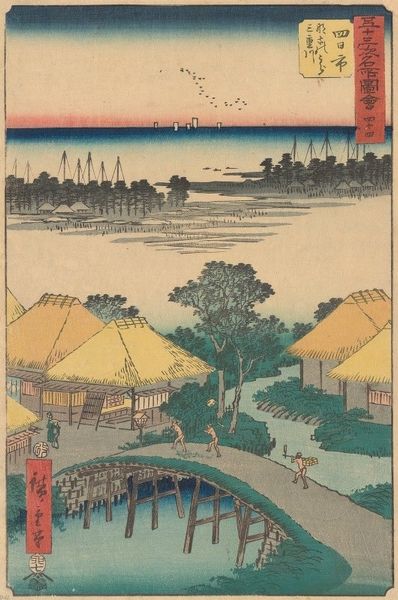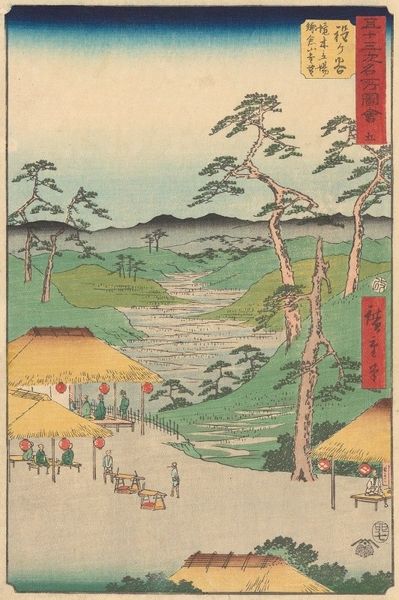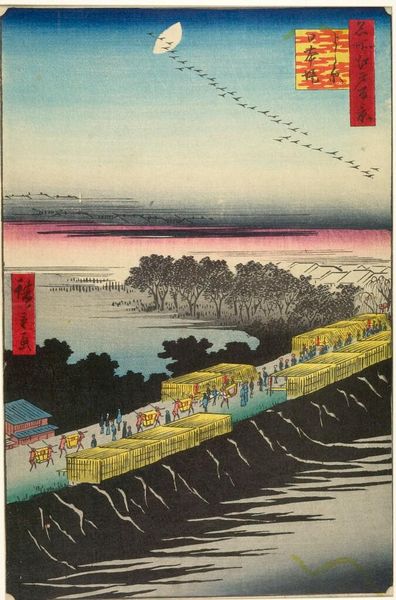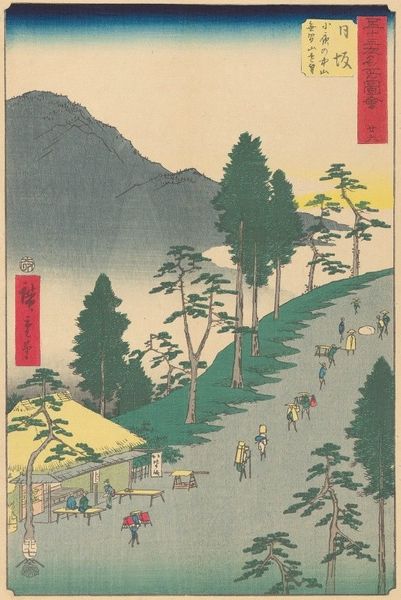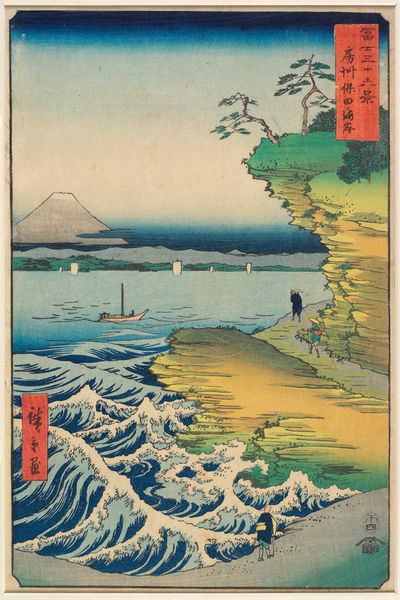
Copyright: Public Domain: Artvee
Utagawa Hiroshige made this woodblock print, Otsu, in nineteenth-century Japan. It’s one of a series depicting famous places, capturing the everyday life of the period. Consider how this image constructs meaning. The print combines a panoramic view of Lake Biwa with intimate scenes of people enjoying the landscape. Note how Hiroshige uses visual codes, like the cherry blossoms and the distant view of Mount Fuji, to evoke a sense of the beauty and serenity of Japan. This reflects a broader cultural interest in landscape and travel during the Edo period when the print was made. A time of relative peace and economic growth led to the development of a leisure culture, and prints like this one catered to the desires of ordinary people to experience the wider world. By studying popular culture artifacts like this, the art historian can reveal a great deal about the beliefs, values, and everyday life of a particular society.
Comments
No comments
Be the first to comment and join the conversation on the ultimate creative platform.
